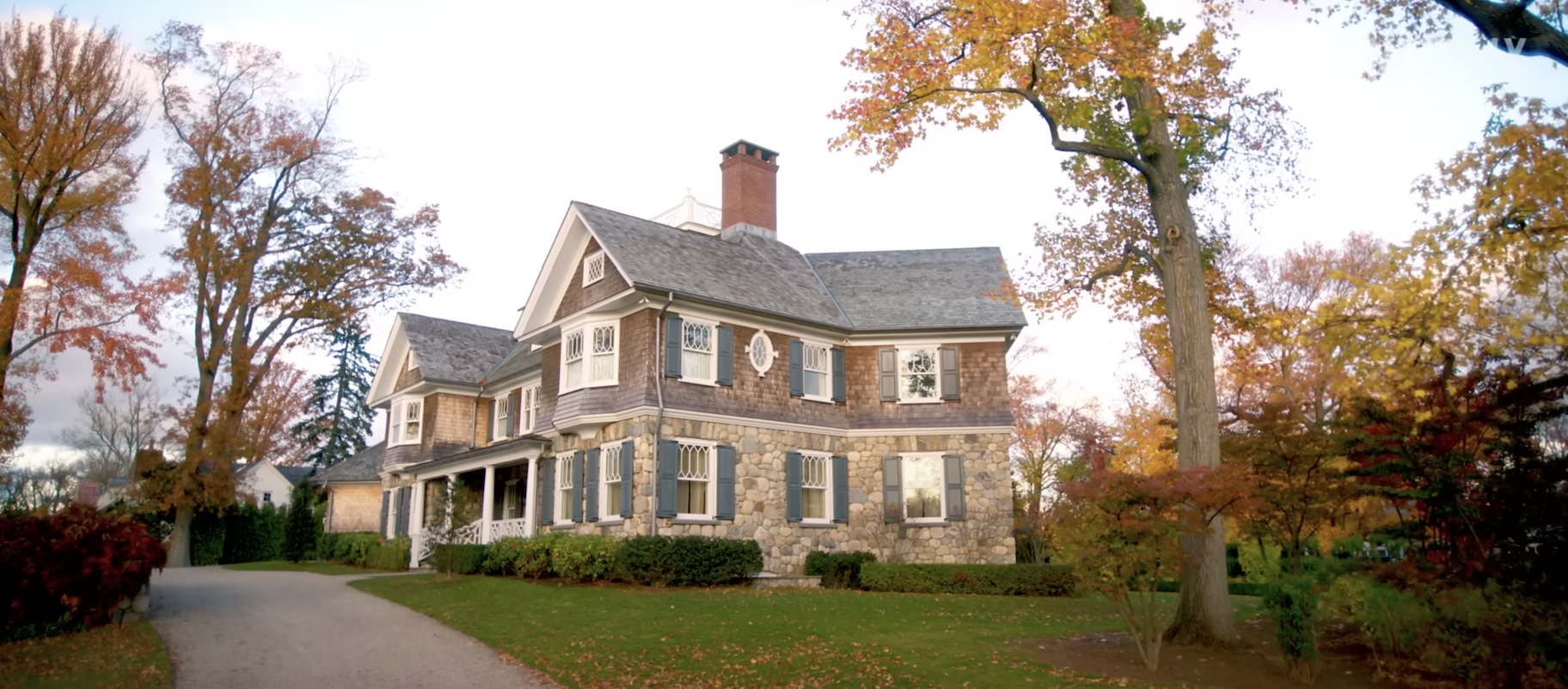The Watcher, a new Netflix series that dropped last week, has plenty of people talking about the unsolved mystery that inspired the show.
Trying to figure out who the watcher is while watching Netflix’s The Watcher, knowing full well the actual case was never solved.
The story, which was first reported by the Cut in 2018, follows the Broaddus family, who began receiving disturbing letters from an unknown stalker after purchasing a home in Westfield, New Jersey.
View this video on YouTube
Whether you've already binge-watched the entire series and are dying for more details or are just curious about the incredibly creepy circumstances surrounding the show, here are 15 details about the real-life mystery that inspired The Watcher:
1. In June 2014, Derek and Maria Broaddus purchased 657 Boulevard, a house in Westfield, New Jersey. The couple, who had three children, planned to do some renovations before moving in. Maria had grown up in Westfield, and their new home was just a few blocks from her childhood house.
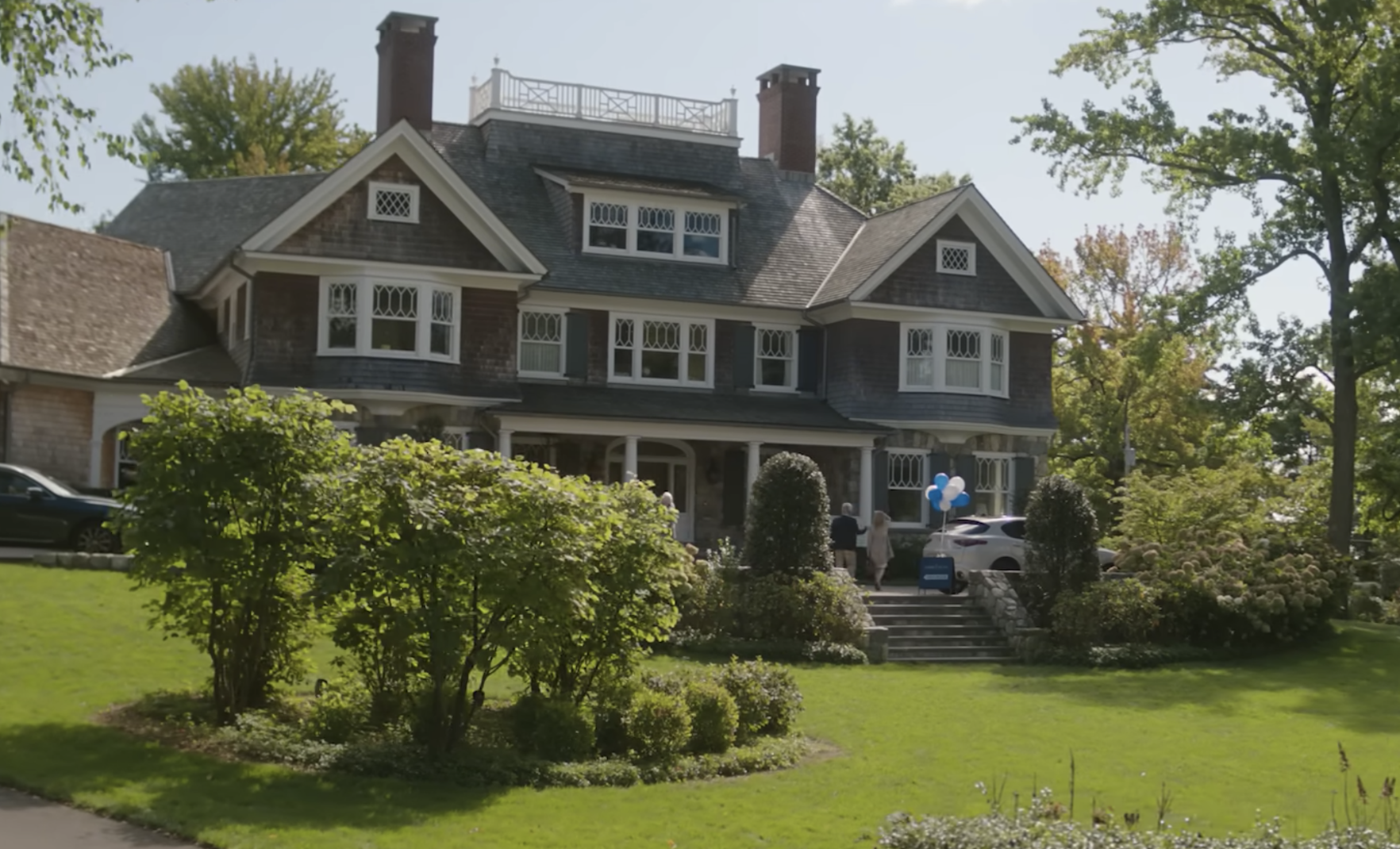
2. Derek told the Cut that when he checked the mail one night, he found an envelope addressed to "The New Owner." The note welcomed the family to the home before taking an eerie turn. "My grandfather watched the house in the 1920s and my father watched in the 1960s. It is now my time," the letter read. "Do you know the history of the house? Do you know what lies within the walls of 657 Boulevard? Why are you here? I will find out."
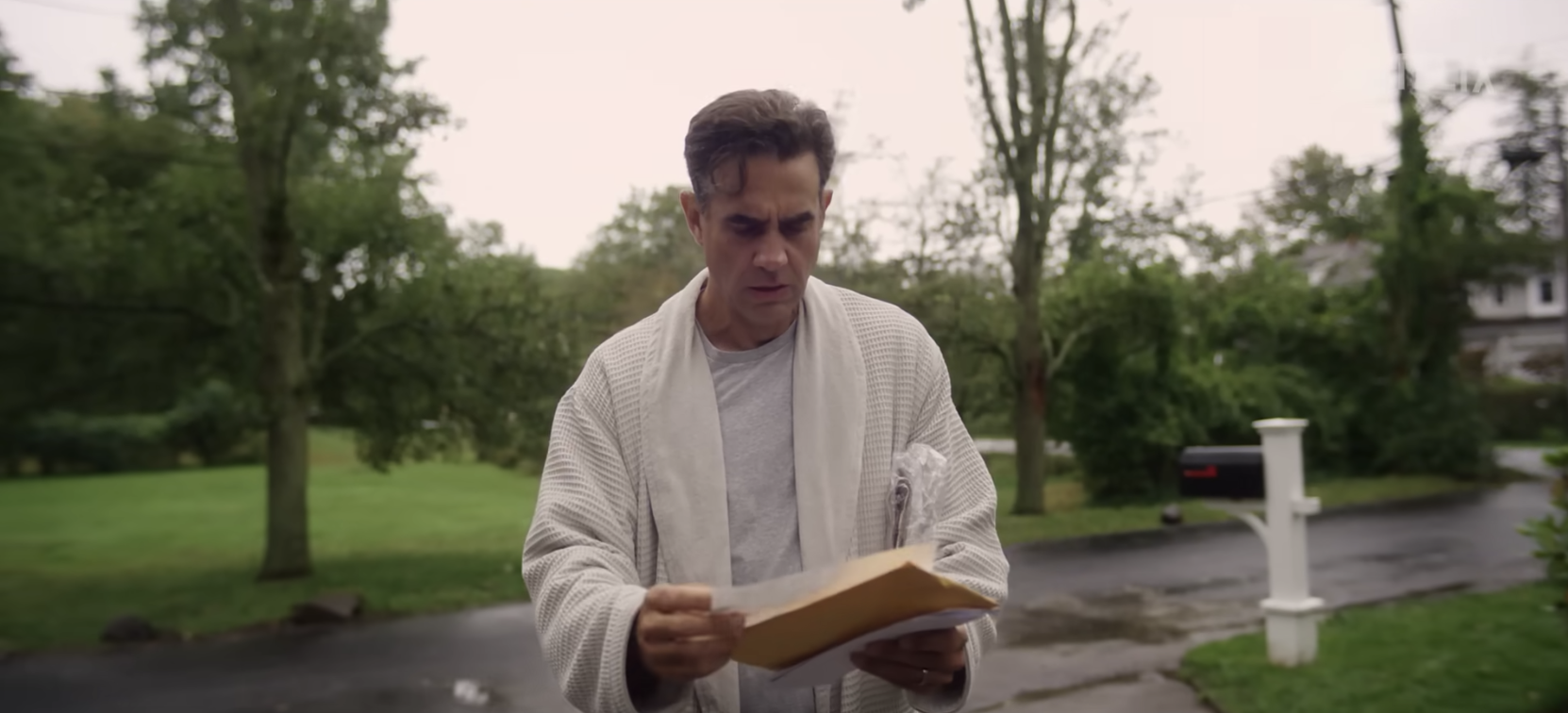
The writer also mentioned that they had been watching the family's three children. "Do you need to fill the house with the young blood I requested? Better for me. Was your old house too small for the growing family? Or was it greed to bring me your children? Once I know their names I will call to them and draw them too [sic] me." The letter was signed by "The Watcher." Upon receiving the letter, Derek told the Cut that he alerted the police and contacted the Woods family, who the Broadduses had purchased the house from. According to the article, Andrea Woods told Derek that they had received a similar letter a few days before they moved out of the home.
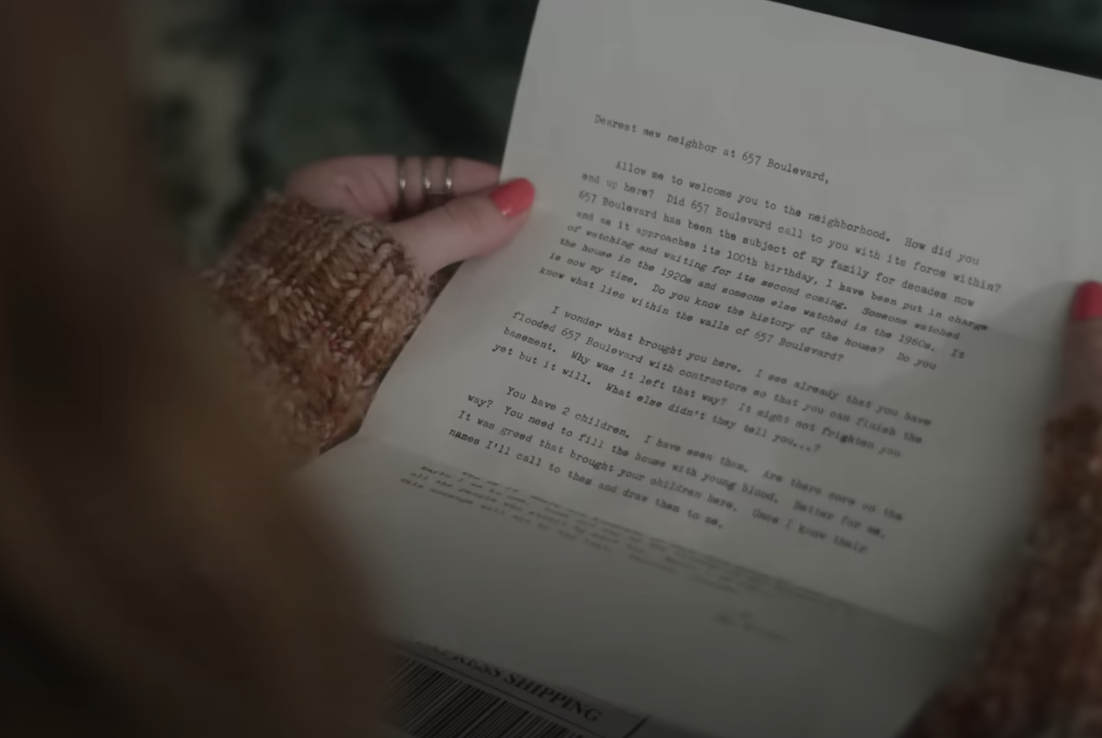
3. Two weeks after receiving the first letter, Maria found another letter in the mail. The second letter referred to the family by name, although it was misspelled, leading them to wonder if "The Watcher [had] been close enough to hear one of the Broadduses’ contractors addressing them." The writer also knew the names and ages of the family's three children and even mentioned that they had noticed one of the children painting at an easel inside an enclosed porch, which the family later told authorities was located in an area that was difficult to see unless the person was right next to the home.

The letter went on to ask if the children were too scared to play in the basement. "I would [be] very afraid if I were them. It is far away from the rest of the house. If you were upstairs you would never hear them scream." The Watcher also asked about which bedrooms the family would be sleeping in, saying it would help them "plan better." After receiving the letter, the family decided to stop bringing their children to the house.
4. Derek told the Cut that he learned about the Langford family from one of his neighbors. The neighbor told Derek that Michael Langford, who lived with his elderly mother in the house next door, was "kind of a Boo Radley character." According to the Cut, Derek believed Michael had to be the culprit, because the Langford's home was close to the porch where the easel was kept. When he approached police about this theory, they told him that they had already looked into Michael but couldn't do much without more hard evidence. "This is someone who threatened my kids, and the police are saying, 'Probably nothing’s gonna happen,'" Derek told the Cut. "Probably isn’t good enough for me."
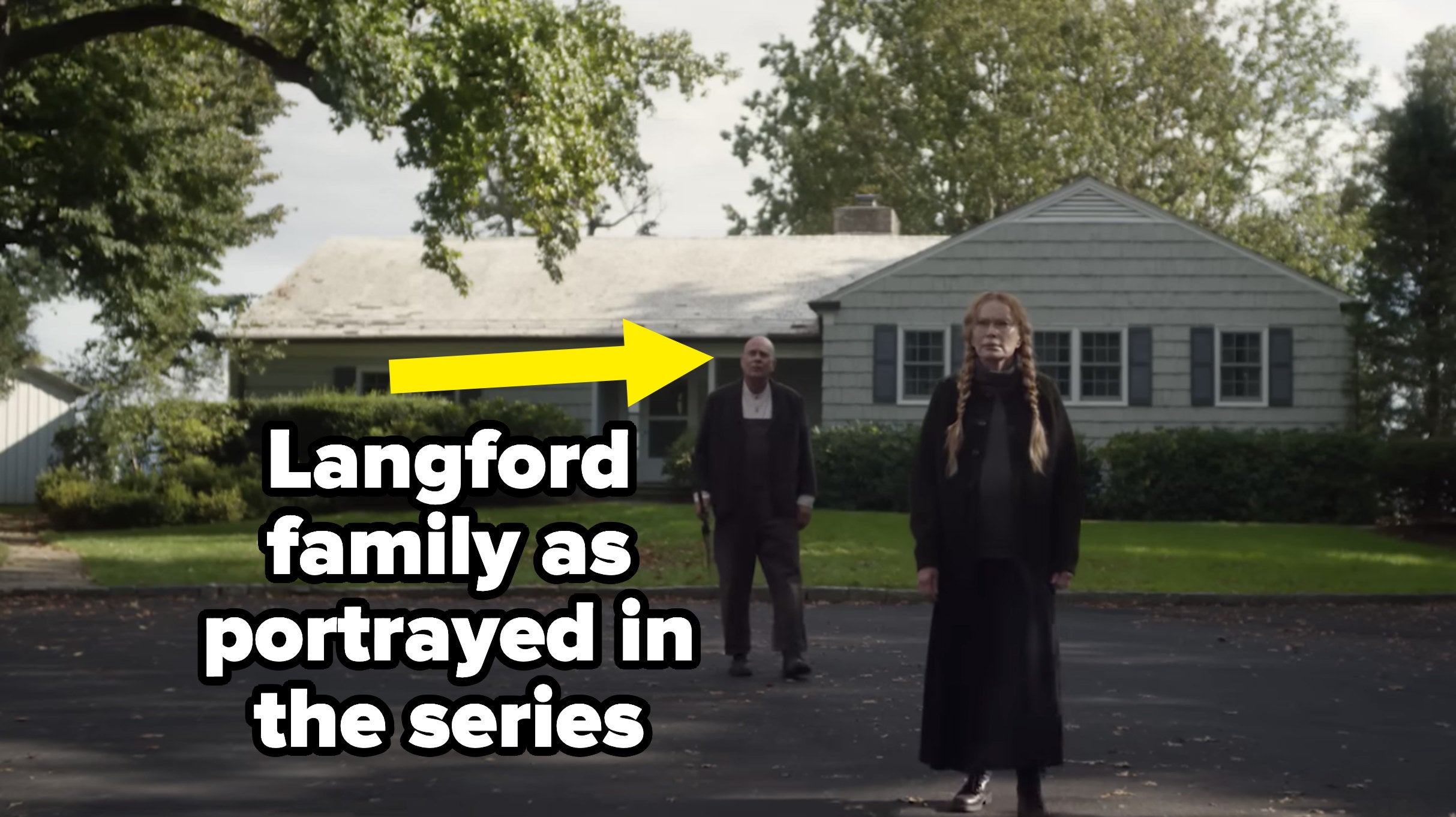
5. According to the Cut, Derek was frustrated that the police weren't progressing with the case and decided to start his own investigation. In addition to setting up cameras, he hired several investigators to case the home and analyze the letters for clues. Robert Lenehan, a former FBI agent, "recognized several old-fashioned tics in the letters that pointed to an older writer," including double spaces between sentences and the fact that the letter had been addressed to "M/M Braddus," an old-fashioned form of writing an address. Lenehan also deduced that a "lack of profanity" meant the writer was likely "less macho."
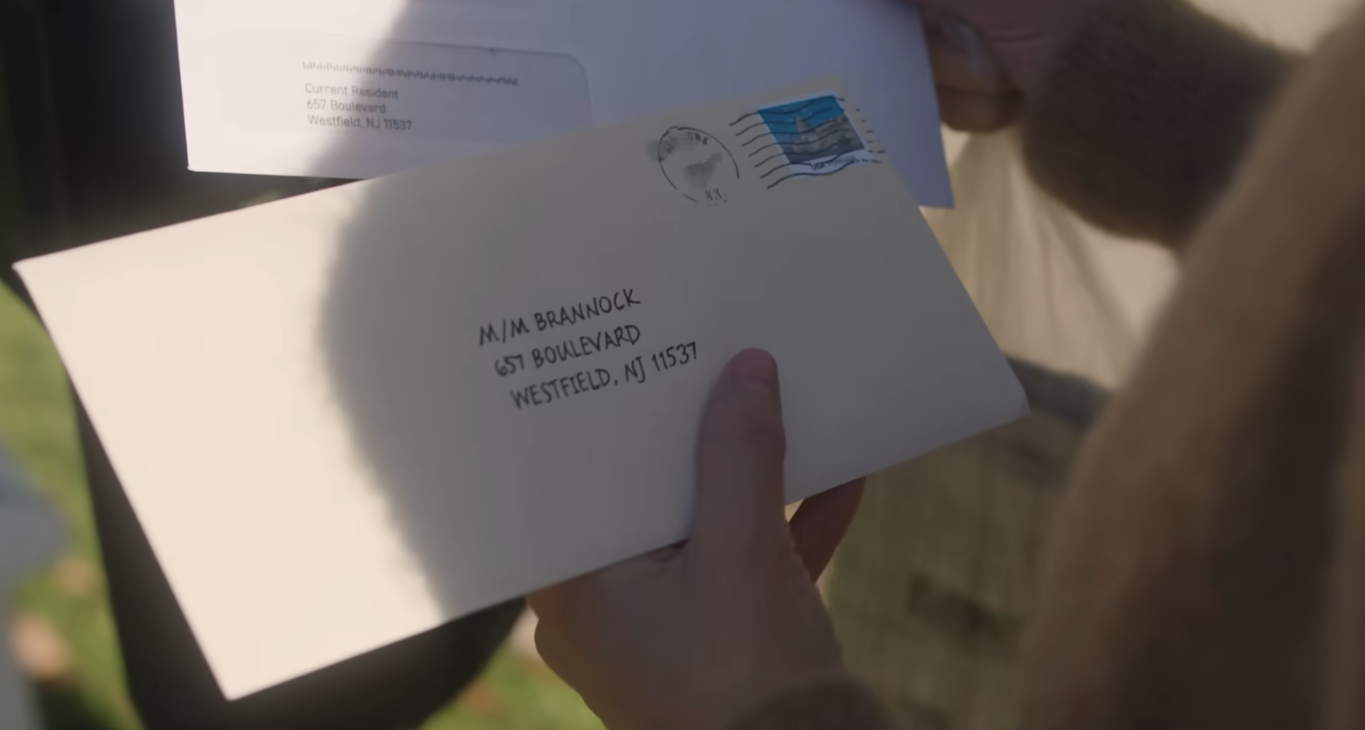
6. Although Derek claimed that he thought the Langfords were the culprits, private investigators found several other leads. According to the Cut, there were two child sex offenders living near the home. Bill Woodward, a painter working in the home, said he noticed the people who lived in the home behind the Broadduses had two chairs positioned suspiciously close to their home. "One day, I was looking out the window and I saw this older guy sitting in one of the chairs,” Woodward told the Cut. "He wasn’t facing his house — he was facing the Broadduses'."
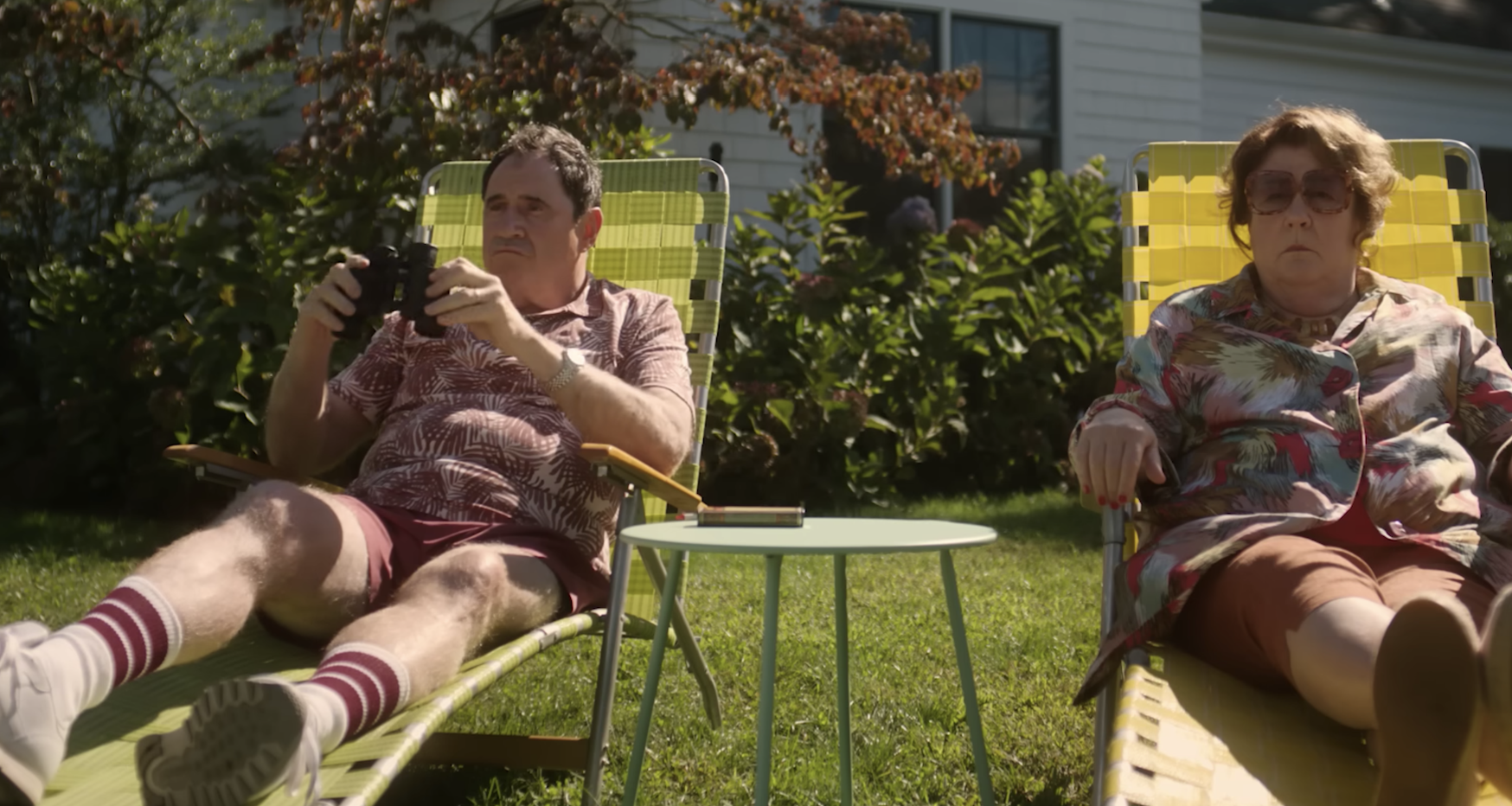
7. Some people in Westfield began spreading theories that the Broadduses were behind the letters themselves. One theory asserted that the family "suffered buyer’s remorse, or realized they couldn’t afford the home, and concocted an elaborate scheme to get out of the sale." Others thought that the couple was attempting insurance fraud, while yet another theory asserted that the couple was looking for a potential movie deal. Derek said he believed the theories were spreading because it would ruin Westfield's reputation of being a safe place to live. "People don’t want to believe this could happen in Westfield," he told the Cut.

8. Years before the Broadduses moved to Westfield, John List murdered his mother, wife, and young children in his home, which was also in Westfield. The show, which refers to List as John Graff, claims that he received similar letters that were the catalyst to him brutally murdering his family. In reality, John List lost his job and began spending the $200,000 his mother had in savings before shooting and killing her, his wife, and their three teenage children on Nov. 9, 1971.

It took authorities over a month to find the bodies. They only searched the Lists' home after neighbors shared their concerns with police. Inside the home, they also found a note from List which said that he killed his family to protect them from evil in the world. By this point, List had fled Westfield, and authorities had no leads. An episode of America's Most Wanted about the case aired in 1989. A woman watching the episode in Richmond, Virginia, thought that List looked like her neighbor Robert Clark, and alerted police, who arrested him. List had been living in Richmond for 18 years, was working as an accountant, and had married a woman he met at a church event. He was convicted and sentenced to five life sentences. List died in prison in 2008.
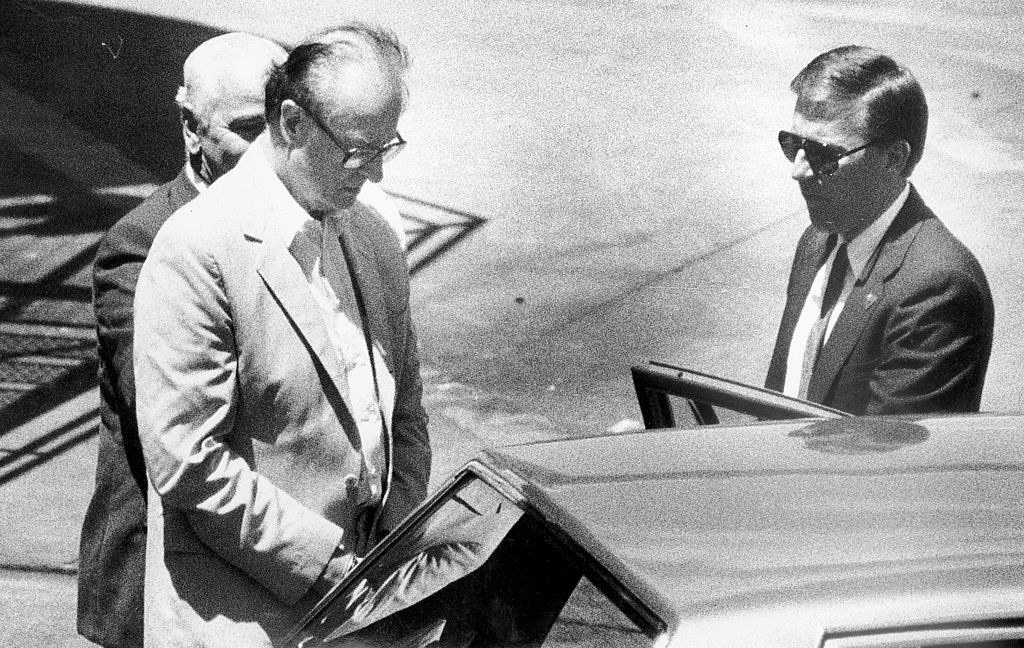
9. The Broadduses ultimately determined it would be unsafe to move their family into the home, and they moved in with Maria's parents. Six months after the letters began, the couple decided to sell the home. According to the Cut, they were unable to secure a buyer because there was so much gossip swirling about the letters, even after they lowered the price. "One broker emailed to say her client 'loved' it but that 'there are so many unsubstantiated rumors flying around,' ranging 'from sexual predator to stalker,' that they needed to know more," the Cut reported. While the couple disclosed the story of The Watcher, they said they were hesitant to show the letters to others unless they knew they were serious about purchasing the home.

10. In June 2015, the Broadduses filed a legal complaint against the Woodses, the couple they bought the home from, for not disclosing that they had received a letter from The Watcher just before they moved out. Soon, the media began to pick up on the story. While the Broadduses claim they got over 300 media requests, the Cut reported that they ultimately "decided not to speak publicly to spare their kids even more attention," and left town.

11. The Broadduses eventually found a family willing to rent the house from them, on the condition that the Broadduses included a clause that would let them break the lease if another letter was sent to the house. Two weeks after they moved in, a letter arrived, reading, "Violent winds and bitter cold/To the vile and spiteful Derek and his wench of a wife Maria." This letter allegedly included specific details about the media coverage and Derek's investigation. According to the Cut, the renter, who was briefly mentioned in the letter, decided to stay in the home after Derek told him he would install security cameras.
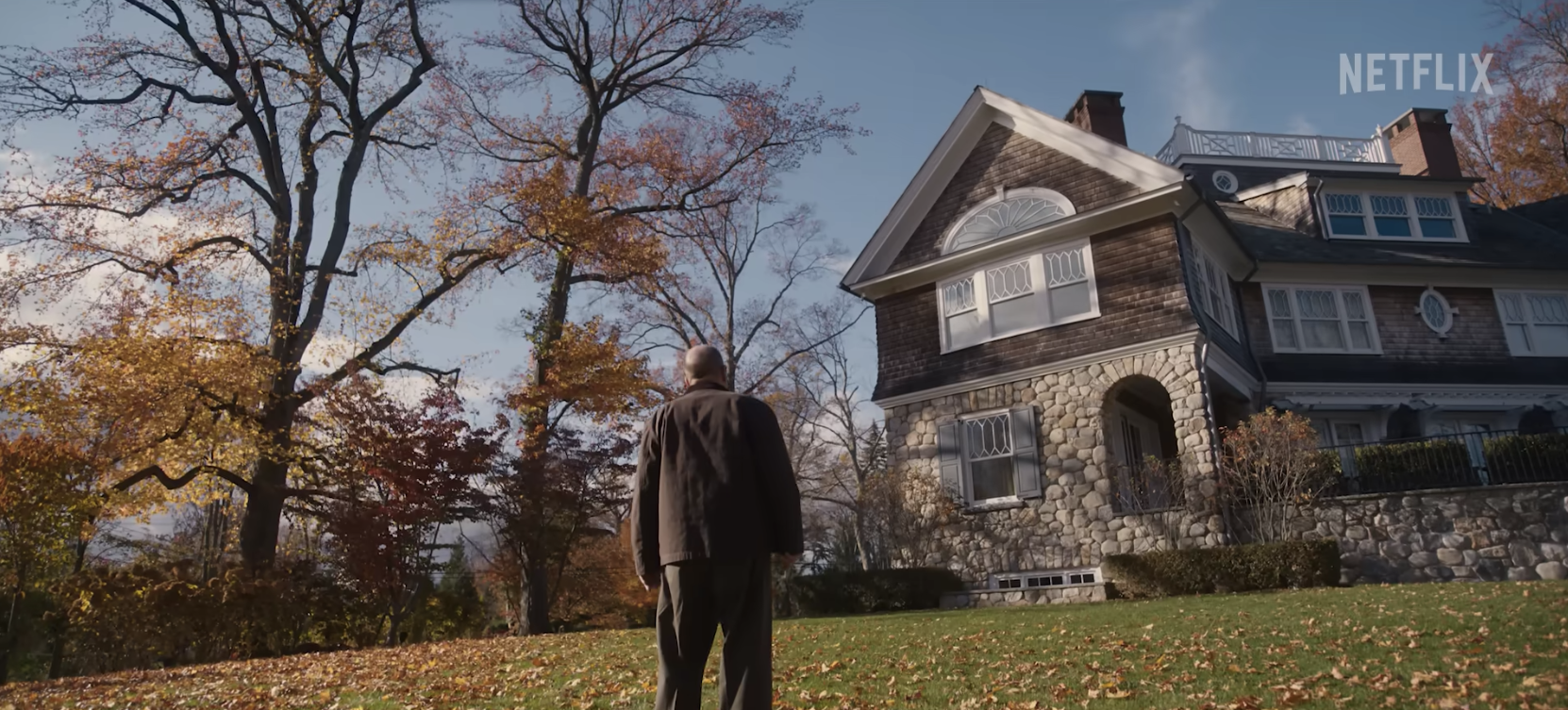
12. On Christmas Eve in 2017, several families who had been vocally speaking out against the Broadduses received anonymous letters in their mailboxes. These letters were not signed from "The Watcher," and instead were from, "Friends of the Broaddus Family." Derek later admitted to the Cut that he had written the letters, but that they were the only letters he had sent. "He had felt driven to his wit’s end, fed up with watching silently as people threw accusations at his family based on practically nothing," the Cut reported.

13. In 2022, the Cut released a follow-up article detailing new findings that have surfaced since their original article was released. One new theory that also appears in the show is that Robert Kaplow, a recently retired English teacher and the author of Me and Orson Welles, was behind the letters. His former students told the Cut that he had frequently talked about writing letters to a house in his hometown. Kaplow denied any involvement and told the Cut that he had written “admiring, not threatening” letters to a different house in Westfield.

14. While "The Watcher" still has not been identified, authorities believe that the culprit is an older female who lives near 657 Boulevard. After the original article was released, the Union County Prosecutor's Office approached those who lived near the home for saliva samples to DNA test against the envelopes. Two neighbors declined. The Cut reported that "at least one of [those who refused] was a 'close neighbor' of 657 Boulevard and someone the police had considered as a suspect."
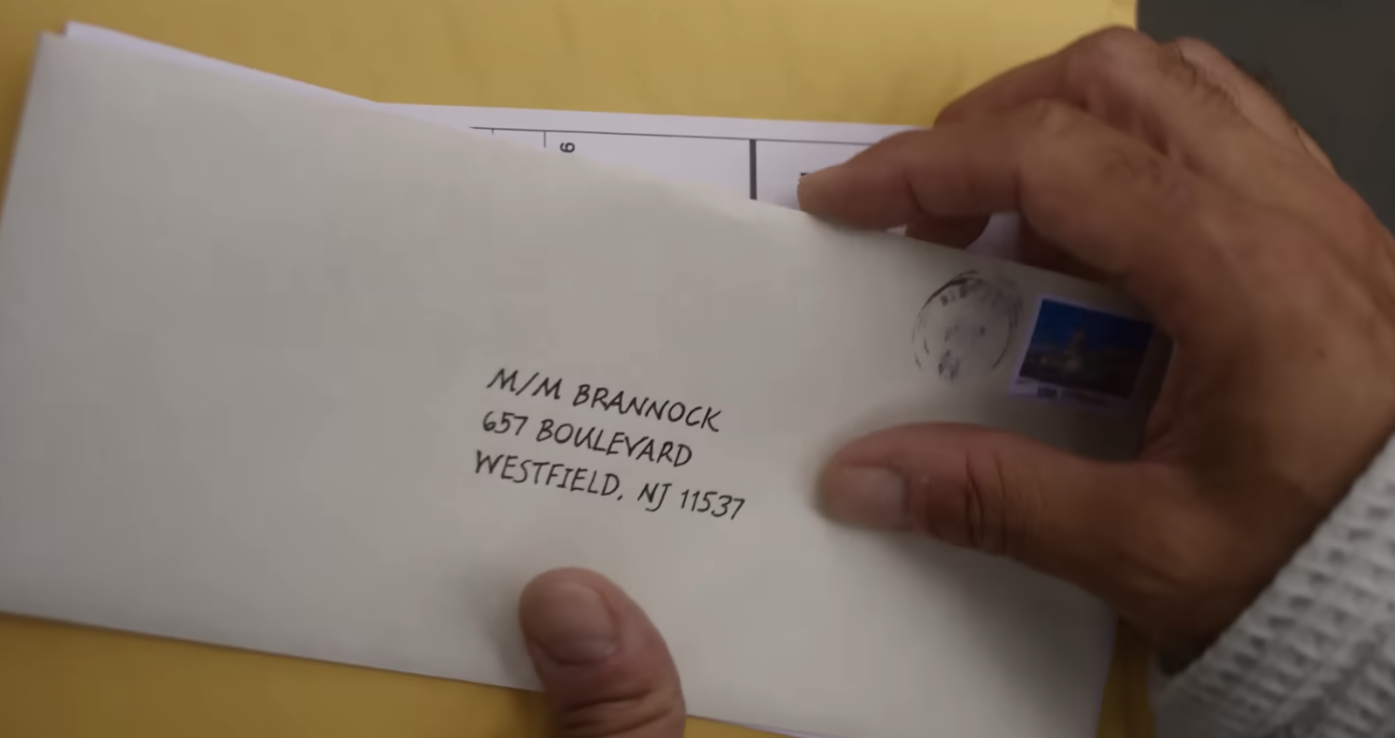
15. The Cut reported that the Broadduses sold their house in 2019. As of 2022, the new owners have not reported receiving any letters from "The Watcher."
